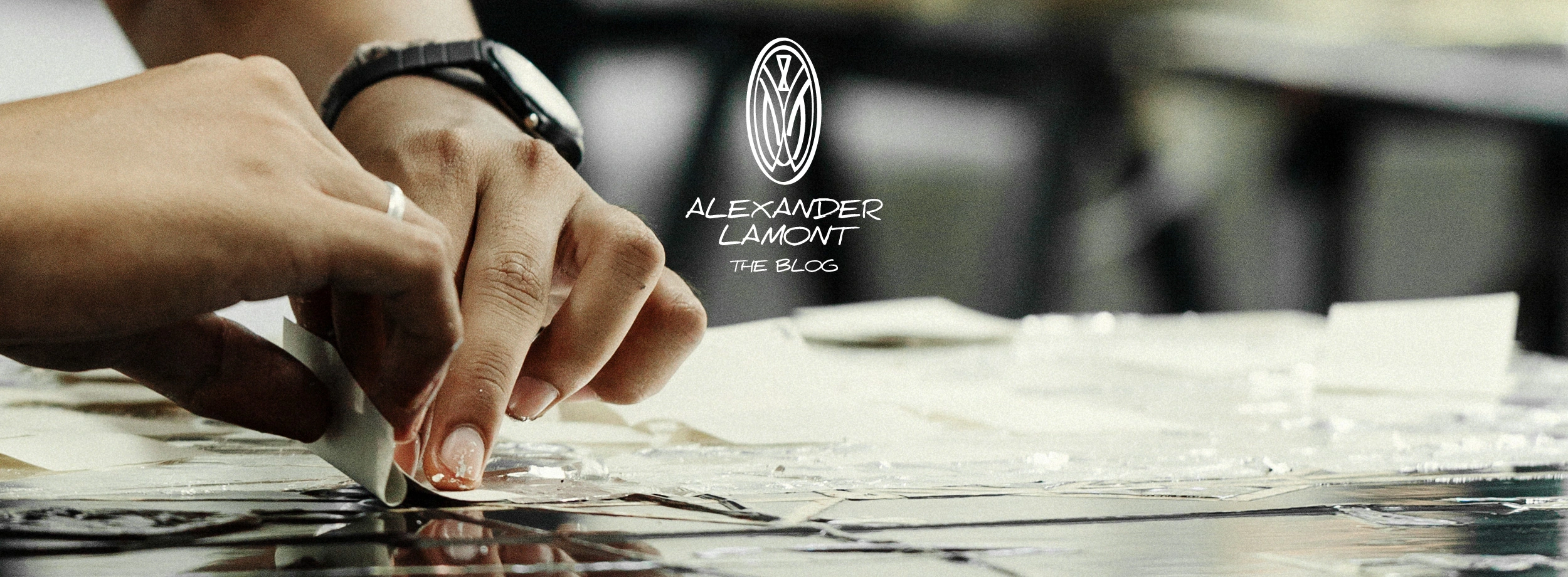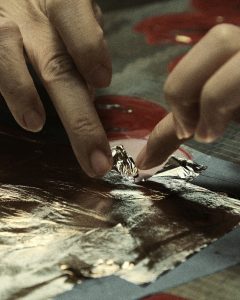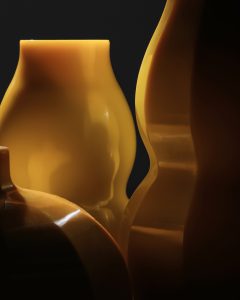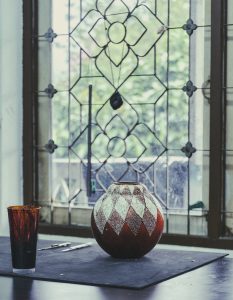For the Scholar’s Collection I worked in collaboration with Japanese artist Ryosuke Harashima to create small objects, treasures, precious pieces that I could not find anywhere, but believed discerning people would appreciate. The inspiration were the objects collected and contemplated upon by the scholars of Ming and Qing dynasty China: pieces that would sit in the palm of the hand or dignify a table surface and be enjoyed for their craft and texture. I looked for function and form that would bring pleasure to the senses. Working in small scale brings a new set of questions and challenges for every material. Here is a short introduction to 7 of the 14 pieces from the collection.
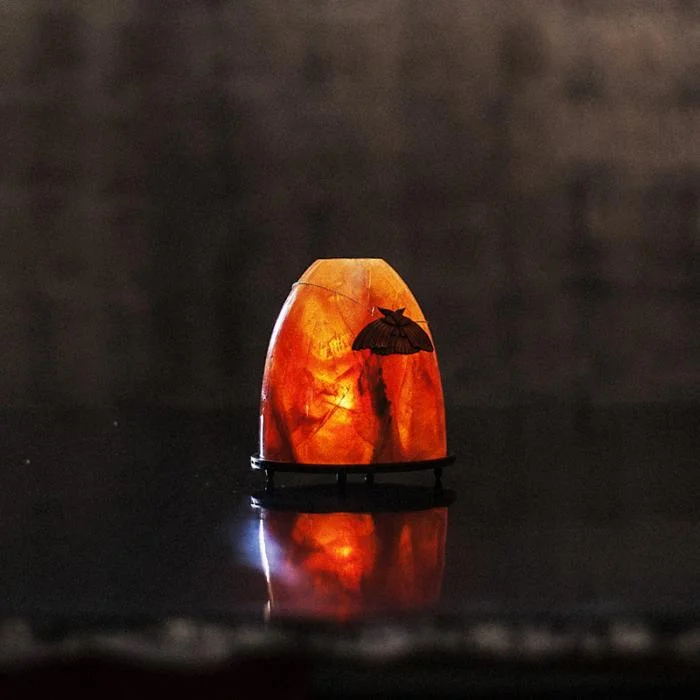
The Nocturne Lantern evokes the opium dens of Saigon and Bangkok at the turn of last century. This small table lantern emits a rich broken light through the gold crystal dome that sits on a bronze base. The moth motif, which was a popular accent on opium lanterns of the early twentieth century in Asia, is hand carved from box wood and gilded. It sits against the lamp’s glow suspended by a silver chain that is countered by rutilated quartz beads.

The Quill Vases are made from lost-wax cast bronze with a deep Japanese rubbed patina. The faceted forms lean gently and pivot on an angled base. Ryosuke was inspired by the slender bronze vases that hold single buds used in the Tokonoma (niche) of the tearoom; inside the niche sits a simple ikebana arrangement of flowers and a scroll of calligraphy or painting. At a certain moment during the tea ceremony, the guests look towards the scroll and flower arrangement and make observations about it. It is a moment of reverie for the austere yet limitless variations of artistic expression. These vases sit beautifully in the hand, like birds.

Inspired by a favourite cabinet piece of the venerated furniture designer Eugene Printz, the Essay Lantern emits naked light though a thick column of rock crystal that has been gilded with 24 karat gold in a linear maze pattern. I love the idea of miniature lanterns that had all the workmanship and detail of a larger lantern but were made for a dining or side table or even bedside cabinet. Rock crystal or crystal de roche, has been the preferred material of the great chandeliers and candelabras of Europe for centuries as it emits a unique quality of light through the occluded clarity. A bronze base and top finishes the lantern.
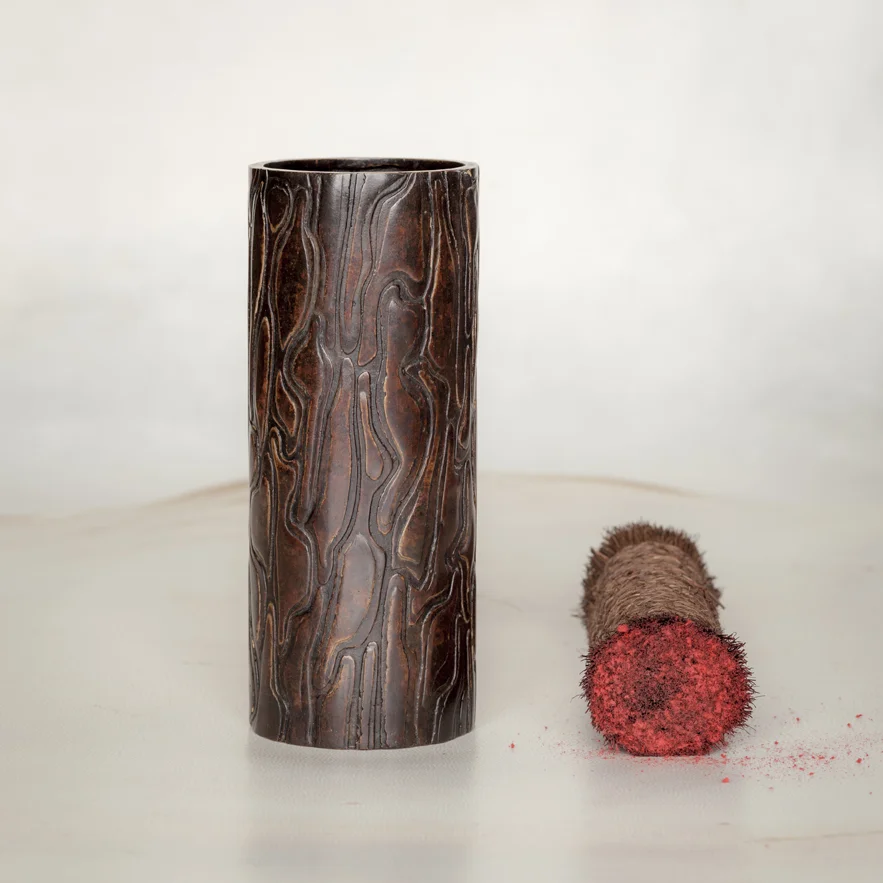
Antique brush pots were made from burl, Huang Huali, Zitan, Jichimu and other rare woods. My Atlas Brush Pot exudes a sense of wood in the layered, peeling patterns of Sycamore bark that were carved in wax before being cast in bronze. This brush pot holds the pens, rulers and pencils of the modern desk rather than the large calligraphy brushes of the 13th century. It is heavy enough to support a tall metal ruler and has a wonderful tactility when taken in the hand. The patina has been hand-finished to bring out the underlying tones of bronze and copper within the cast piece.
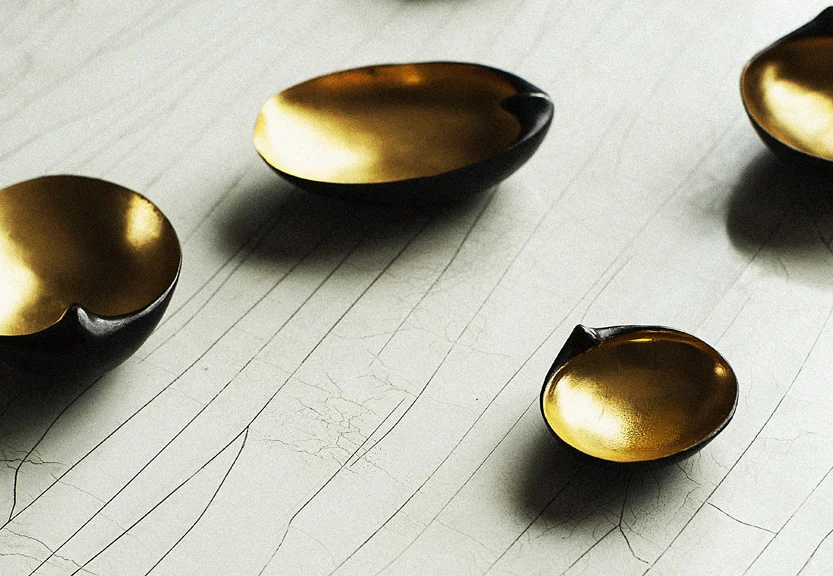
These light and curvaceous gold and bronze objects are beautiful scattered across the beach of a dining table or coffee table to catch the warm flickering light of candles and the breezes of evening conversation. They simply reflect the mood around them and sit in the hand like treasured beach finds.

We have made two shapes and sizes to sit together as siblings. The Chinese keep their stone chops and red ink in boxes that are somewhat like these. The boxes have a natural texture and warm patina that gives them a gentle tactile feeling and tone. Bronze is poured into molds at around 1,200 degrees celsius. The bronze expands and contracts and cools and is then finished by hand and patinated. Making a small box requires piece-by-piece finishing.
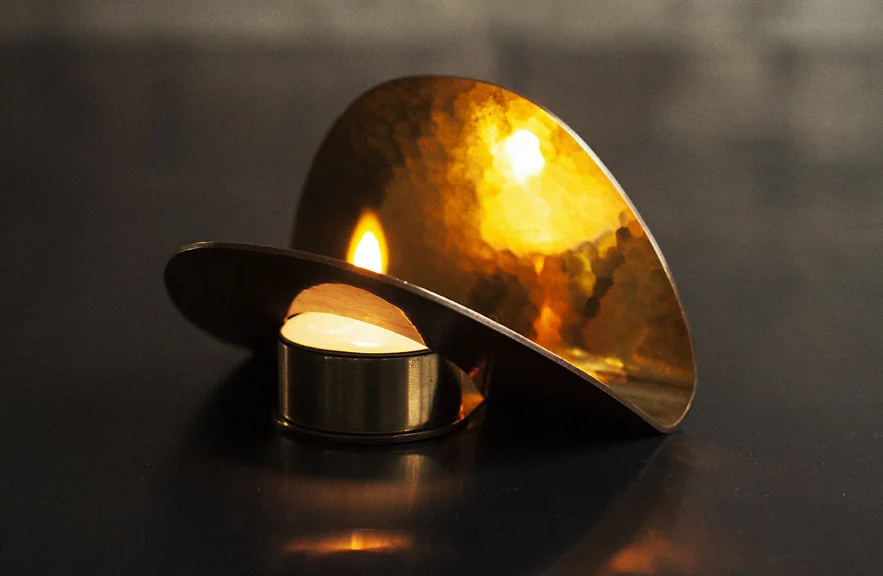
In this piece an egg shape of thick brass is hammered with a soft repousse hammer and then cut and bent into a leaning votive (tea light) holder. From the egg comes light! The prototype was made in Kanazawa, Japan by a copper artist following the design from Ryosuke Harashima. The back is patinated in an old gold tone and the front has not been covered with anything. The surface will age and corrode if left alone or you can polish it to a high shine.
